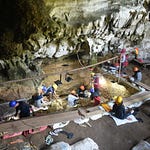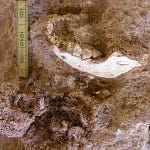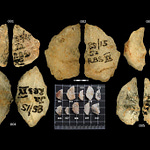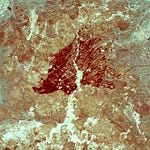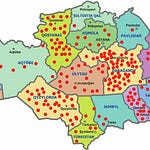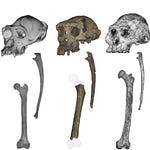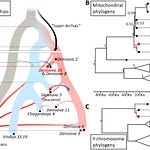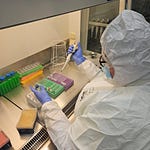Roughly 60,000 years ago, early Homo sapiens made their way out of Africa into unfamiliar landscapes. There, they encountered their evolutionary cousins: the Neanderthals. What followed wasn’t just competition or coexistence, but interbreeding. This exchange left traces of Neanderthal DNA within the genomes of nearly all people with Eurasian ancestry today. These ancient genetic remnants are small, typically under 2%, but some carry unexpected weight.

Recent research published in Molecular Psychiatry1 suggests that certain fragments of Neanderthal DNA may contribute to the complex landscape of autism spectrum disorder (ASD). The study, conducted by researchers at Clemson University and Loyola University, examined whole-genome sequences from autistic individuals, their siblings, and control subjects. The results reveal that particular Neanderthal-derived genetic variants occur more frequently in autistic individuals and, intriguingly, in their non-autistic siblings as well.
"It’s not a question of having more Neanderthal DNA overall. It’s about carrying specific fragments that shape how the brain connects and responds," the authors wrote.
Wiring the Brain for Focus
The team focused on regions of the genome tied to neurodevelopment and cognitive processing. Among the notable findings were links between archaic variants and brain circuitry involved in visual perception and internal social reflection.
Functional MRI scans showed that individuals with a higher number of these Neanderthal variants exhibited increased activity in visual processing regions and decreased activation in the brain’s default mode network, which supports social cognition and introspection. These brain connectivity patterns align with cognitive profiles seen in many autistic individuals – heightened perceptual acuity, intense attention to detail, and social fatigue.
"These results suggest that certain ancient genetic elements may amplify strengths in observation and planning, while tuning down social processing."
The study also highlighted parallels between Neanderthal tool-making behavior and the cognitive attributes emphasized by these variants. Neanderthal stone tools, especially those shaped through the Levallois technique, required detailed visual-spatial planning and precise motor control – qualities that resonate with some common autistic strengths today.
Evolutionary Trade-Offs
Why did these variants persist in human populations? One possibility lies in their usefulness to small-scale hunter-gatherer groups. In the relatively solitary and visually demanding environments Neanderthals inhabited, traits like sharp pattern recognition and focused attention may have outweighed the demands of complex social interaction.
"Visual scouting for game, tracking subtle environmental changes, and tool production may have rewarded the perceptual strengths tied to these variants," the authors note.
As Homo sapiens spread across the globe, these Neanderthal-derived genes may have offered benefits in specific ecological or cultural settings. And today, they continue to influence traits that span a wide neurodiverse spectrum.
A Shared Heritage, Reframed
The study does not claim that autism is caused by Neanderthal DNA. Instead, it offers a biological lens on why certain cognitive traits persist globally and appear across family lines. These findings emphasize autism not as a modern disorder, but as part of a much older continuum of human variation shaped by ancient interbreeding.
"This research reframes neurodiversity as a legacy of evolutionary complexity rather than an anomaly of modernity."
It also opens the door to rethinking what traits society values, and how to better support individuals whose minds work differently. Rather than pathologizing, the results invite an appreciation for deep ancestral roots and the adaptive value of cognitive diversity.
Looking Ahead
Further research will likely explore how these ancient variants interact with modern environments, as well as their role in other neurodevelopmental and psychiatric conditions. As genome sequencing continues to scale globally, scientists may uncover additional archaic legacies with lasting relevance to health, intelligence, and human behavior.
The story of human evolution is not a clean break between species. It is a braided stream of shared inheritances, some of which still shape how we see the world, relate to others, and solve problems. The Neanderthal contribution to autism is one more thread in that rich and ongoing tapestry.
Related Research
Simonti, C. N., et al. (2016). The phenotypic legacy of admixture between modern humans and Neandertals. Science, 351(6274), 737-741. https://doi.org/10.1126/science.aad2149
Dannemann, M., & Kelso, J. (2017). The contribution of Neanderthals to phenotypic variation in modern humans. The American Journal of Human Genetics, 101(4), 578-589. https://doi.org/10.1016/j.ajhg.2017.08.004
Trujillo, C. A., et al. (2021). Reintroduction of archaic variants into modern human regulatory networks. Cell, 184(24), 6246-6259.e20. https://doi.org/10.1016/j.cell.2021.11.026
Pauly, R., Johnson, L., Feltus, F. A., & Casanova, E. L. (2024). Enrichment of a subset of Neanderthal polymorphisms in autistic probands and siblings. Molecular Psychiatry, 29(11), 3452–3461. https://doi.org/10.1038/s41380-024-02593-7


